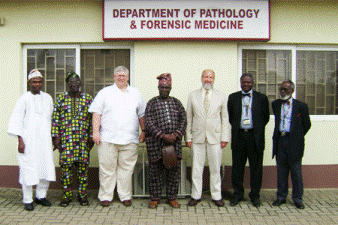Natural Resources, School of

Karl Reinhard Publications
Document Type
Article
Date of this Version
1-2015
Citation
Published in Journal of Archaeological Science 53 (January 2015) , pp. 304–315; doi:10.1016/j.jas.2014.10.023
Abstract
Coprolites were recovered from three burials near the Grand Place of Nivelles, Belgium. These remains yielded evidence of geohelminth parasitism. The evidence contributes to studies of differential parasite egg preservation related to the taphonomic conditions within the three burials. Using coprolite analysis techniques, parasite egg concentrations were quantified for each burial. Coprolites from the individual in Burial 122 were abnormally large and abundant, indicating an intestinal blockage. Additionally, this individual hosted an extremely high number of parasites evinced by the calculated parasite egg concentrations (Trichuris trichiura = 1,577,679 total eggs; Ascaris lumbricoides = 202,350 total eggs). Statistical analyses revealed a positive and significant correlation between A. lumbricoides egg and T. trichiura egg presence (eggs per gram [epg]: r2 = 0.583; eggs per coprolite [epc]: r2 = 0.71). Burial 122 coprolites show a statistically significant increase in egg concentration from the upper colon to the lower colon. Taking extreme parasitism into consideration, the possible causes of the intestinal blockage are discussed. We propose a synergy of high parasite burden and diet contributed to the intestinal blockage. Superior parasite egg preservation was observed in coprolites from Burial 122 compared to Burials 009 and 119. This is due to a variety of taphonomic factors, including a more limited percolation of fluid through the grave sediment.
Included in
Archaeological Anthropology Commons, Ecology and Evolutionary Biology Commons, Environmental Public Health Commons, Other Public Health Commons, Parasitology Commons


Comments
Copyright © 2014 Elsevier Ltd. Used by permission.